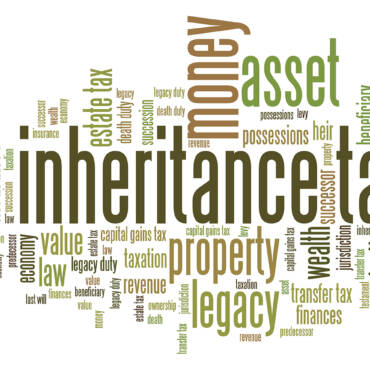HMRC rakes in over £6bn in Inheritance Tax (IHT) receipts!
HMRC has taken in around £6.1bn from annual inheritance tax receipts, to tax year end 2021, as more families are being dragged across the inheritance threshold.
The IHT receipts are up by 14% from £5.4bn in the previous year and the average bill has increased by £7,000 from £209,000 to £216,000. HMRC’s figures released at the end of July also showed an increase in the number of estates paying inheritance tax.
The data also showed that inheritance tax receipts have reached their highest level on record, with the likely causes being the Covid pandemic, rising asset values and a freeze in IHT thresholds.
There are a number of contributary factors driving up IHT bills and dragging more and more people into the orbit of this punishing tax.
This year’s surge in receipts will probably have been partly driven by the ongoing increase in house prices, as residential property makes up the largest share of most estates.
There may well have also been a higher volume of wealth transfers due to Covid – partly due to more deaths in the elderly population, but also due to some people making outright gifts to help family throughout this difficult period.
It will take a few years for the precise detail on how the data actually breaks down between the increases in the number of taxable estates and larger tax bills, but it’s hard to imagine the average tax bill will have shrunk.
But it’s quite obvious that more people are being dragged across the threshold for inheritance tax and that IHT bills are getting bigger, which is a kick in the teeth for many families picking up the tab. The idea that you work hard, save hard and pay taxes all through your life only to see a huge chunk of what you have accumulated taken by the state can be very unpalatable for the vast majority of people.
These IHT figures are also set to rise to £8.3bn by 2026 according to the Office for Budget Responsibility (OBR).
Meanwhile the nil-rate band, the level at which estates are exempt from IHT, is due for review in 2026. This was frozen at £325,000 in 2009. The IHT nil-rate band would have now been in the region of around £460,000 if it had increased in line with inflation over that period. Estates under £1M per person only qualify for the full additional £175,000 allowance.
As the nil rate band for Inheritance Tax has been frozen for more than a decade, the result is, that it is now woefully lagging behind inflation. While IHT has historically been a tax of the very wealthy this is clearly no longer the case.
With property prices soaring and most personal tax allowances including the standard and residence nil rate band frozen until April 2026, this is now a concern for larger sections of society as the IHT tax net widens, and more families will face a hefty inheritance bill in the coming years.
It is therefore vitally important that people start to have conversations with their loved ones and advisers to fully understand their estate and the value of it sooner rather than later. While it is not always the easiest conversation to have, it is far better to have it now than during more emotionally challenging times such as following a death.
However, individuals can take action to keep their inheritance tax bills to a minimum via a number of different solutions.
These include giving money away from regular income which are not deemed to affect the giver’s standard of living, investing in schemes that qualify for Business Property Relief (BPR), establishing trusts including a discounted gift trust (DGT), investing in AIM stocks that can be held within an ISA, insuring the tax liability via a Whole of Life policy. (See Adam’s article)
This is obviously a hugely difficult and complex area, if you should require any further advice regarding IHT planning and the mitigation schemes as detailed above, please just get in touch.
Take care everyone!
Craig


